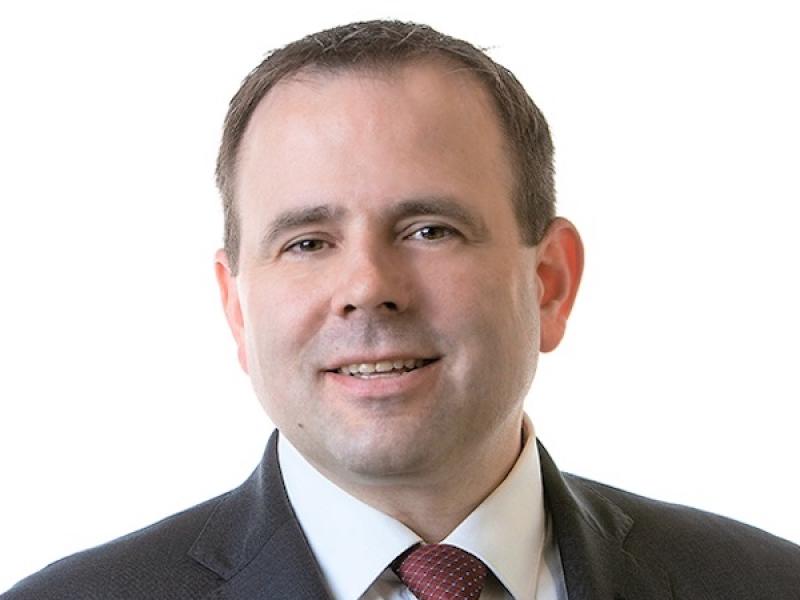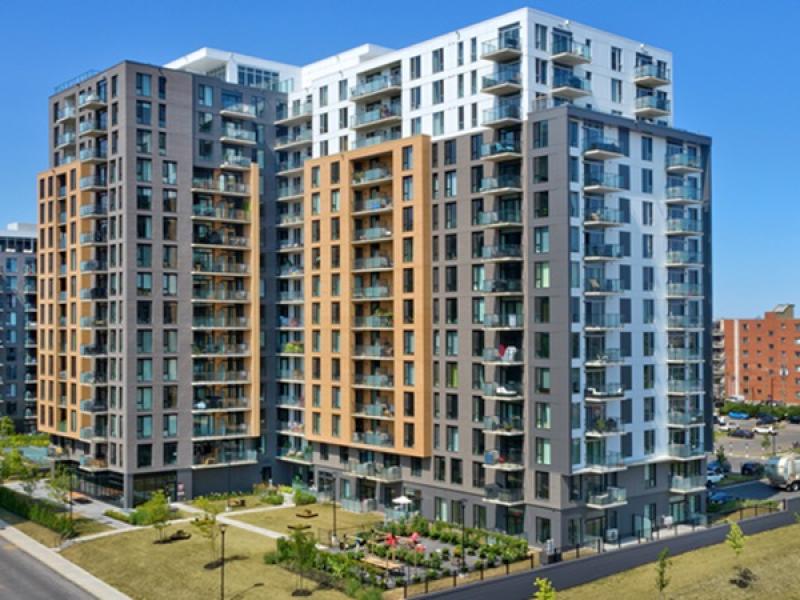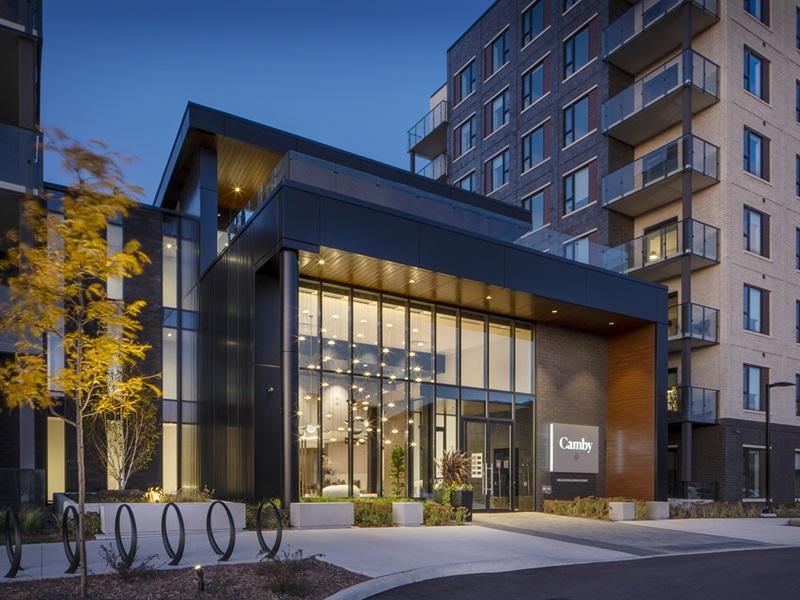
Panelists discussing equity in Canadian real estate financing and investment at RealCapital 2020 in Toronto, from left: Michael Tsourounis of Timbercreek, Scott MacPherson of Cushman & Wakefield Structured Finance ULC, Jenny Li of BMO Capital Markets, Colin Baryliuk of KingSett Capital and moderator Hugh Gorman of Colonnade BridgePort. (Steve McLean RENX)
Institutional investors and investment management funds are shifting more capital allocations into the commercial and multi-family real estate markets despite indications they’re late in the cycle and due for a downturn after a long period of good times.
“The market is still very strong and demand is still very strong for real estate,” KingSett Capital executive managing director of investments Colin Baryliuk said during a panel discussion at the Feb. 25 RealCapital conference at the Metro Toronto Convention Centre.
KingSett’s capital predominantly comes from domestic pension funds and high net worth investors. Baryliuk said “pension funds tend to be strategy-specific and sophisticated” while high net worth investors want to place money where it will be actively managed and can be used as a hedge against the stock market.
BMO Capital Markets managing director of North American real estate Jenny Li noted institutions accounted for 54 per cent of the equity in issuances by real estate investment trusts (REITs) and real estate operating companies in 2019 after maxing out at 40 per cent over the previous 10 years.
While domestic investment still dominates, Timbercreek managing director of real estate investment management Michael Tsourounis said Canada is still seen as a stable place to park money. He expects capital will continue to flow in from other countries.
He cited a Timbercreek closed-end fund focused on Canadian multi-family which raised $550 million in equity, with just over half of that coming from Germany.
Cushman & Wakefield Structured Finance ULC managing director Scott MacPherson said South Korean capital and family offices from Hong Kong and Singapore are making their presence felt with investments in Toronto and Vancouver.
Li said American institutional investors, over the last four years, have increased their activity in Canada and now account for 25 to 30 per cent of institutional equity take-up. She noted there’s a view that American REITs are “maxed-out in terms of runway for upside,” making richer yields in Canada attractive.
Favoured asset classes and markets
Toronto, Vancouver and Montreal are leading the way for real estate investment because of strong economic fundamentals, said Tsourounis.
Baryliuk said people continue to buy real estate as interest rates remain low (they could go even lower this year), and REITs continue to report income growth.
Baryliuk thinks multi-family has growth potential in Toronto. He said industrial rent growth will keep that asset class strong and there are deals to be done in the sector in Toronto and Montreal. The office sector has been a very good performer for his company in Toronto and Vancouver.
While retail has cooled, Baryliuk believes people may come back to it due to its lower values.
MacPherson favours investing in Canadian cities with National Hockey League teams. He said equity has moved away from condominiums to income-producing properties and thinks core area self-storage facilities close to multi-family properties are a good play.
Real estate stability and risks
Li said the highest total returns for REITs in 2019 came from, in order: multi-family; industrial; diversified; office; retail; and seniors housing. The order three years ago was: industrial; multi-family; office; diversified; retail; and seniors housing.
She added publicly listed REITs often trade at a discount to net asset value (NAV) because of the volatility of the equity market compared to an asset-specific investment. Industrial REITs have recently traded at a premium to NAV, while multi-family REITs were generally at or slightly above NAV, and diversified REITs traded the furthest below NAV.
Despite this, Li said: “When the markets are good and open, it’s a great way to raise a lot of capital from a very diverse pool of people.”
MacPherson noted there are core, core-plus, value-add and opportunistic investment strategies. He said core has a target internal rate of return of seven to nine per cent, the core-plus target is nine to 12 per cent, the value-add target is 12 to 16 per cent and the opportunistic target is 16 per cent-plus. Target returns and leverage increase correspondingly, according to MacPherson.
“In years previous, there was a lot of capital for opportunistic and value-add plays,” he said. “What we saw in 2019 was the shift back to core and core-plus investment strategies.”
Baryliuk recommended putting money in any market with a demographic growth profile, and then staying flexible with asset classes, to generate good returns.
Colonnade BridgePort chief executive officer and panel moderator Hugh Gorman observed there may be a bit more risk involved to get the same return as in the past.
What to look for in deal sponsors
Timbercreek does deals across North America in a variety of asset classes and locations, and it looks for markets with good liquidity. While the company prefers to buy assets directly, Tsourounis said it will work with local market sponsors in areas where it doesn’t have on-site management or boots on the ground.
“We want our local market sponsors to have a lot of expertise in terms of leasing and capital execution, and having better trade relationships in markets where we’re not as active,” said Tsourounis, who also emphasized the importance of sponsors having meaningful capital in deals.
MacPherson said Cushman & Wakefield does background checks on sponsors to learn about their viability and credibility, and then educates them on deal structures to see what type will work best.
Cushman & Wakefield also looks at the experience of developers to make sure that they’re “not making a quantum leap from townhomes to 30-storey high-rise concrete buildings,” said MacPherson.
KingSett does a lot of partnerships and Baryliuk said it seeks opportunities where it can find “a combination of knowledge, intensity and alignment” with partners.
Li said she’s seen successful marriages between developers and sponsors who have good properties, but lack the capital to develop them. She’s also detected a trend of capital recycling over the past few years, where assets are sold and the capital redeployed on more lucrative development projects.







